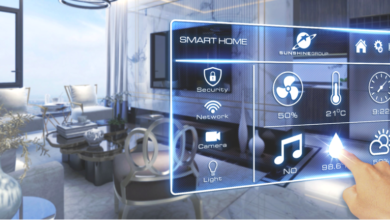IoT and Healthcare: Transforming Patient Care In 2024

IoT and Healthcare: Transforming Patient Care In 2024? The field of healthcare is undergoing a revolutionary transformation with the integration of the Internet of Things (IoT). In 2024, IoT is playing a pivotal role in reshaping patient care, offering innovative solutions to enhance efficiency, improve data analytics, and ultimately provide personalized healthcare experiences. Let’s delve into the various facets of this transformative journey.
Table of Contents
ToggleDefinition of IoT in Healthcare
IoT refers to the network of interconnected devices embedded with sensors, software, and other technologies, facilitating the exchange of data. In the healthcare sector, IoT involves the integration of smart devices and systems to collect and share health-related information.
Significance of IoT in Patient Care
The integration of IoT in healthcare aims to revolutionize patient care by providing real-time data, improving communication between patients and healthcare providers, and enhancing overall healthcare outcomes.
IoT Applications in Healthcare
Remote Patient Monitoring
One of the significant applications of IoT is remote patient monitoring. Wearable devices and sensors allow healthcare providers to monitor patients’ vital signs in real-time, enabling early detection of health issues.
Smart Wearables in Health Tracking
The use of smart wearables, such as fitness trackers and smartwatches, is contributing to health tracking on a broader scale. These devices monitor activities, sleep patterns, and vital signs, empowering individuals to take proactive steps towards their well-being.
IoT-Enabled Medication Adherence
IoT plays a crucial role in medication adherence by sending reminders and tracking patients’ medication schedules. This application enhances treatment effectiveness and reduces the risk of missed doses.
Read More: Wearable Tech DIY: Building Your IoT Wearable Device In 2024
-
IoT and Satellite Connectivity: Bridging the Gap in Remote Areas18 February 2025
-
The Role of Edge Computing in Germany’s IoT Infrastructure18 February 2025
Enhanced Data Collection and Analysis
Real-Time Health Data
IoT facilitates the collection of real-time health data, allowing healthcare professionals to make informed decisions promptly. This data-driven approach improves diagnostics and treatment plans.
Predictive Analytics in Healthcare
The integration of predictive analytics in healthcare IoT enables the identification of potential health issues before they manifest. This proactive approach allows for preventive measures and personalized care plans.
Read More : Creating Your IoT Dashboard: A User-Friendly Tutorial In 2024
Improved Patient Engagement
Personalized Healthcare
IoT contributes to personalized healthcare by tailoring treatment plans based on individual health data. This patient-centric approach improves treatment outcomes and overall satisfaction.
IoT in Patient Education
Through IoT, patients have access to educational resources and real-time information about their health conditions. This empowerment fosters informed decision-making and active participation in their care.
Security and Privacy Concerns
Data Security in Healthcare IoT
The sensitive nature of health data requires robust security measures. Implementing encryption and stringent access controls is crucial to safeguarding patient information.
Ensuring Patient Privacy
As IoT expands in healthcare, maintaining patient privacy becomes a priority. Healthcare providers must implement policies and technologies to protect patients’ personal and medical information.
Integration of IoT in Healthcare Facilities
Smart Hospitals
IoT transforms traditional hospitals into smart facilities by automating processes, optimizing resource utilization, and enhancing the overall efficiency of healthcare delivery.
IoT Devices in Healthcare Settings
From smart infusion pumps to connected medical equipment, the integration of IoT devices in healthcare settings streamlines workflows and improves the accuracy of diagnostics and treatment.
Challenges and Solutions
Overcoming Implementation Challenges
Despite its potential, implementing IoT in healthcare comes with challenges. Overcoming issues related to interoperability and standardization is crucial for successful integration.
Addressing Data Integration Issues
Ensuring seamless integration of data from diverse sources is a common challenge. Adopting standardized protocols and interoperable systems is essential for overcoming these issues.
Future Trends in IoT and Healthcare
AI Integration in IoT for Healthcare
The integration of artificial intelligence (AI) with IoT will further enhance predictive analytics, diagnostic accuracy, and personalized treatment plans.
Impact of 5G on Healthcare IoT
The rollout of 5G technology will revolutionize healthcare IoT by providing faster and more reliable connectivity, enabling real-time data transmission and remote healthcare services.
Case Studies
Successful Implementation Stories
Examining successful case studies provides insights into the benefits and best practices of implementing IoT in healthcare settings.
Lessons Learned from Failed Attempts
Analyzing unsuccessful attempts highlights potential pitfalls and offers valuable lessons for future IoT integration in healthcare.
Patient Empowerment through IoT
Active Patient Participation
IoT empowers patients to actively participate in their healthcare journey, fostering a sense of control and engagement in decision-making.
Shifting the Healthcare Paradigm
The patient-centric approach facilitated by IoT marks a paradigm shift in healthcare, focusing on prevention, personalization, and improved overall well-being.
Regulatory Framework and Compliance
Current Regulations in Healthcare IoT
Navigating the regulatory landscape is crucial for healthcare providers, ensuring compliance with existing standards and regulations related to IoT in healthcare.
Navigating Compliance Challenges
Adhering to regulatory requirements poses challenges. Developing strategies to navigate compliance challenges is vital for the successful integration of IoT in healthcare.
Economic Impact of IoT in Healthcare
Cost-Effective Healthcare Solutions
IoT presents cost-effective solutions for healthcare by optimizing resource utilization, reducing manual intervention, and minimizing unnecessary medical procedures.
Financial Benefits for Healthcare Providers
The implementation of IoT in healthcare leads to financial benefits for providers through operational efficiency, reduced hospital readmissions, and improved patient outcomes. These financial gains contribute to the sustainability of healthcare systems.
Global Perspectives on IoT and Healthcare
International Adoption of Healthcare IoT
The adoption of IoT in healthcare is a global phenomenon. Exploring how different countries implement and adapt IoT technologies offers valuable insights into the diverse approaches and challenges faced on an international scale.
Variances in Implementation Strategies
Cultural, regulatory, and infrastructural differences influence the implementation of IoT in healthcare. Understanding these variances helps tailor strategies for successful integration in different regions.
Ethical Considerations
Ensuring Ethical Use of IoT in Healthcare
Ethical considerations are paramount in healthcare IoT. Ensuring responsible and ethical use of patient data, maintaining transparency, and addressing concerns related to consent are crucial aspects of ethical implementation.
Balancing Technological Advancements with Ethics
As technology advances, it’s essential to strike a balance between innovation and ethical considerations. Striving for technological excellence while upholding ethical standards is imperative for the sustained trust of patients and the broader community.
Conclusion
In conclusion, IoT in healthcare is reshaping the landscape of patient care in 2024. From remote patient monitoring to predictive analytics, the integration of IoT technologies enhances efficiency, improves patient outcomes, and empowers individuals to actively participate in their health management. Despite challenges, the future of healthcare is undeniably intertwined with the possibilities offered by IoT.
FAQs : Transforming Patient Care
What is the primary role of IoT in healthcare?
IoT in healthcare primarily aims to enhance patient care by providing real-time data, improving diagnostics, and facilitating personalized treatment plans.
How does IoT contribute to patient empowerment?
IoT empowers patients by providing access to real-time health data, educational resources, and active participation in their healthcare decisions.
What challenges does the implementation of IoT in healthcare face?
Challenges include interoperability issues, data security concerns, and the need for compliance with existing regulations.
How does IoT impact the financial aspect of healthcare providers?
IoT leads to financial benefits for healthcare providers through operational efficiency, reduced readmissions, and improved patient outcomes.
What is the global perspective on IoT adoption in healthcare?
The adoption of IoT in healthcare is a global phenomenon, with variances in implementation strategies influenced by cultural, regulatory, and infrastructural differences.










